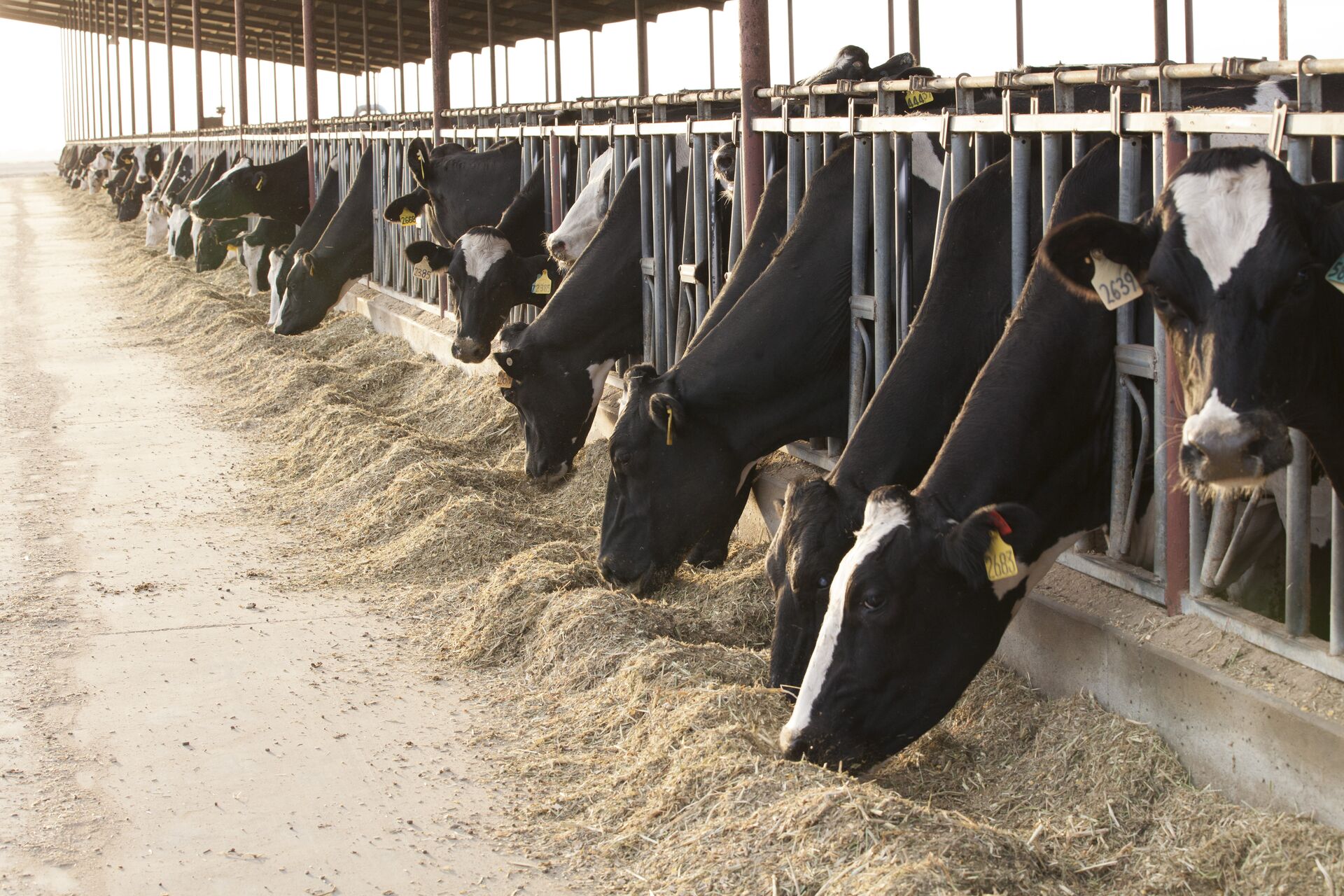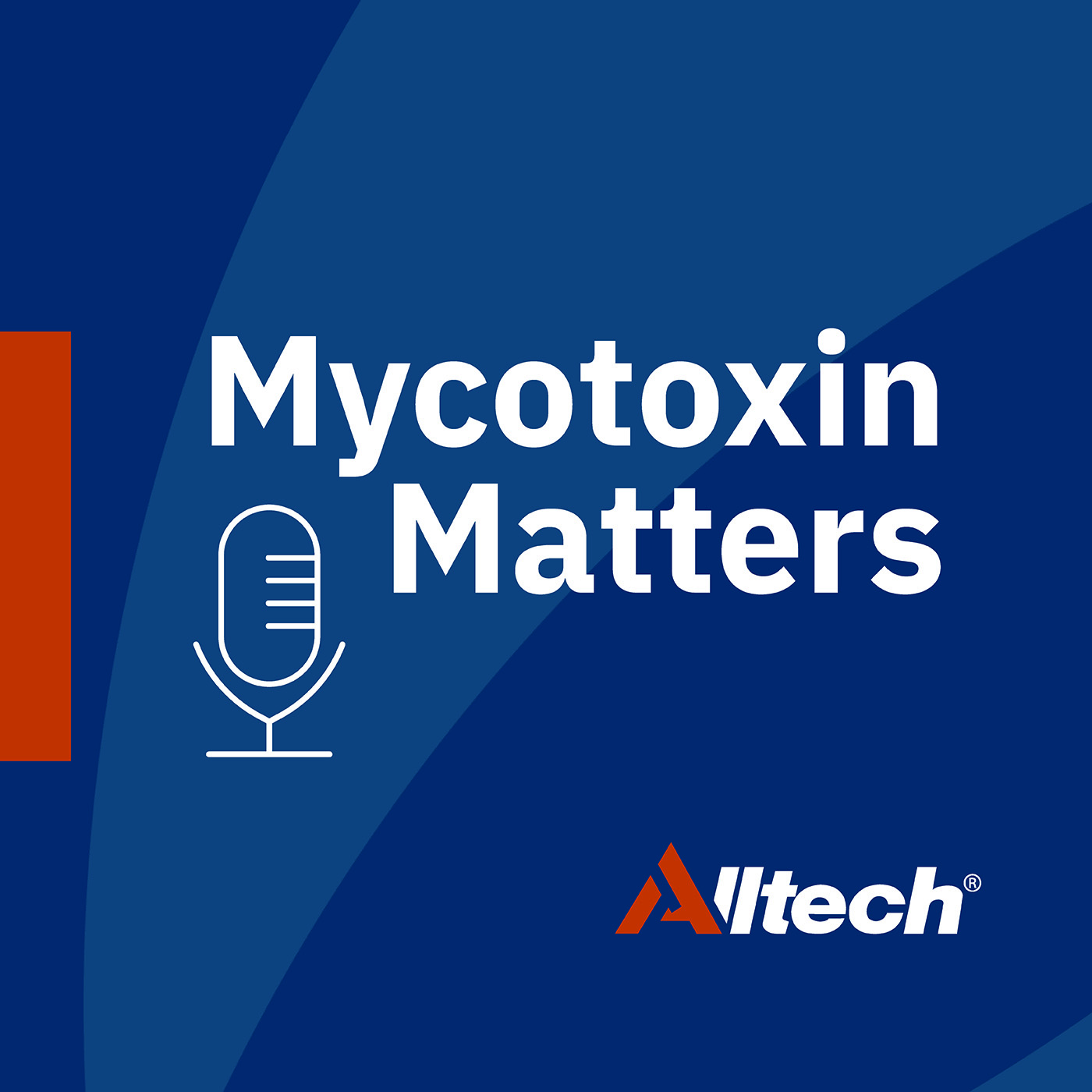Keep ahead of the threat
Stay up to date with the latest mycotoxin information by signing up to our newsletter

A Herd’s Efficiency Needs Optimal Forage
Author: Gordon Marley – Global Silage Support Lead, Alltech
Click below to listen to the Mycotoxin Matters podcast episode with Gordon Marley, hosted by Martin Minchin. In this episode, they discuss the fundamentals of forage management. Forage quality has become an important topic globally, as beef and dairy producers have sought to increase animal productivity and make more use of total mixed rations or TMRS. Learn more about the potential losses and each stage of the forage production process, in order to maximize and optimize the volume and quality of forage produced on farm, in this episode. You can also listen to the episode on Apple Podcasts or Spotify. You can find an edited transcript at the bottom of the page.
Pushing for more productivity
Forages have long been the dominant feedstuff used in the production of ruminant livestock. As livestock producers across the world have sought to increase the productivity of their herds in recent decades, the use of higher forage content total mixed rations (TMRs) has grown in popularity, creating the need for greater monitoring of the quality of high inclusion feedstuffs such as grass silage, corn silage, alfalfa or small grain silages. These individually, and in combination tend to represent the greatest percentage of the TMR, and their quality will be a key determining factor in driving efficient production and animal health. Every step in the production of forage, from the field to the feed passage has the potential to lead to a reduction in both the quantity and the quality of the forage that is ensiled and subsequently fed. These losses can be kept to a minimum with the implementation of good management practices at each step in the process. The first step is to recognise the critical timings and steps involved.
Preparing for harvest
Prior to a forage crop being harvested, management of ensiling should be considered with any necessary repairs to bunkers made, oxygen barrier plastic ordered, and high specification silage inoculant purchased if planning to apply this at harvest. Where a contractor is being used, it is advised to be communicating with the contractor well in advance of the expected cutting date. This allows agreement on what is expected from both parties, including the setting of some key goals. These may need to be adjusted depending on prevalent weather conditions.
Cutting dates
The date of cutting is defined by a number of factors including fertilizer and slurry application dates, the herd’s nutritional requirements and local climate conditions. Where grass is being harvested it should be nitrate tested prior to mowing to ensure nitrate levels below are 1,000ppm. A minimum 4-week period should have been left since the last slurry or digestate application. If a multi-cut system is to be adopted, the farm should consider the differing management practises involved in this system. Clamp slippage can become a bigger issue in this type of harvest program. Where inoculants such as Egalis® Ferment are being applied, your Alltech advisor is well equipped to help with any advice on use and application rates. It is key to remember that although yield increases with time in the field, quality will decrease in parallel. Choosing the optimum date to find a balance between quantity and quality is an important decision. Once harvesting has started, the forage chop length may need to be adjusted due to increased or decreased dry matter.
Achieving rapid fermentation
The success of forage quality depends entirely on bacteria and speed. Minimising the time between cutting, collecting, appropriately compacting, correctly sealing and then achieving the fastest fermentation defines the final quality of the silage that is produced. Delays during this process can lead to increased nutrient and dry matter losses, the production of increasing levels of unpalatable compounds and ultimately an increase in the risk of silage heating during feed out due to higher yeast and mould levels.
Silage inoculants are designed to speed up the process of fermentation. Efficacy of an inoculant is maximised by its application at the point when forage is being harvested. Egalis Ferment from Alltech is a 1 million bacteria per gram silage inoculant that works across all areas of the pH fall, maximising the retention of dry matter, digestibility, protein and nutrients whilst producing highly palatable silage. Egalis Ferment has been shown to convert ensiled oxygen to carbon dioxide faster than lower specification products, allowing the fermentation of the ensiled grass to start more rapidly.
The importance of a well-sealed clamp
Optimizing the recovery of dry matter and nutrients from the field to the feed passage through the use of a high specification inoculant and good management reduces replacement feed costs and maximises feed efficiency, but how?
Rapid exclusion of air from ensiled forage and conversion of the entrapped air to carbon dioxide enhances the speed of fermentation, leading to a rapid inhibition of naturally occurring spoilage organisms and, in combination with an inoculant, protects the maximum amount of nutrients. If ensiled grass is not correctly sealed (damage to plastic, damage to walls, inadequate overlap etc..) long term air entry will occur.
Depending on the density of the ensiled forage, air can penetrate to a depth of approximately 1m, and to whatever depth it penetrates to will result in the growth of undesirable bacteria, yeast and mould, resulting in exceedingly high dry matter losses (up to 40%) where the sealing has failed. Ongoing growth of ‘aerobic spoilage organisms’ leads to various potential issues:
- Always a loss of dry matter and nutritive value with concomitant reduction in milk production as the impacted silage has lower digestibility and energy values due to undesirable microbial growth
- Always a reduction in the aerobic stability of the both within the bunker but also in the overall TMR due to the growth of yeast and mould that proliferate even with low concentrations of oxygen.
- Typically a loss of palatability of the silage as the aerobic organisms produce a variety of metabolites that negatively impact the aroma of the silage (ammonia, acetic acid, ethanol etc…) leading to a reduction in dry matter intake
- Potentially the production of fungal and bacterial toxins that can impact everything from animal performance, health and fertility
Management during storage
Storage formed mycotoxins are typically produced when fungi are stressed. This can be at the exact area of air entry into the silage and be associated with visible growth of yeasts and moulds, or it can be deeper into the silage where the ais is still penetrating and the growth of the yeast and mould is challenged by the oxygen concentration, the pH or simply by the lactic acid bacteria that are present. Under such stressors, certain micro-organisms produce potent toxins in an effort to protect their continued growth. Discarding the area of visible spoilage from a storage structure does not necessarily overcome potential toxin challenge.
Management of the silage does not stop at the point of sealing, rather it continues through storage and feed out. Silages should be regularly checked for damage to the plastic which is typically in the form of bird damage or animal damage. The silage directly underneath the plastic has the lowest density of any of the storage structure meaning that damage to the plastic will typically allow air to spread radially in all directions – each bird hole can negatively impact up to 500Kgs of silage. Any damage should be immediately repaired with barrier tape.
Opening of the storage structure necessitates ongoing exposure of the silage to air. Silages typically have a minimum of 2 – 3 days aerobic stability (the time before the silage starts to heat) due to the compaction and the fermentation that has occurred. However, inappropriate feed out management can reduce this time and cause silage to heat within the bunker. Feed out should be undertaken in a way that maintains the integrity of the face and does not let air enter behind the face. Ideally a defacer, a rake or a sharp block cutter will be used to remove silage and it should take no more than 5 days to move across the full face of the clamp. Even if no mold is present, it is good practice to test regularly for the presence of mycotoxins. Laboratories such as Alltech 37+® can detect up to 54 individual mycotoxins in forages, including the Penicillium toxins, the most common toxins detected in forages in UK and Ireland. The results of this test can inform decisions on use of a mycotoxin binder in the herd’s diet.
Producing and feeding the highest quality silage is a year-round task demanding effective management of every process from pre-harvest testing to good feed out management. Alltech’s range of solutions and services are designed to help you meet these objectives.
Contact your local Alltech representative or distributor today to find out more.








